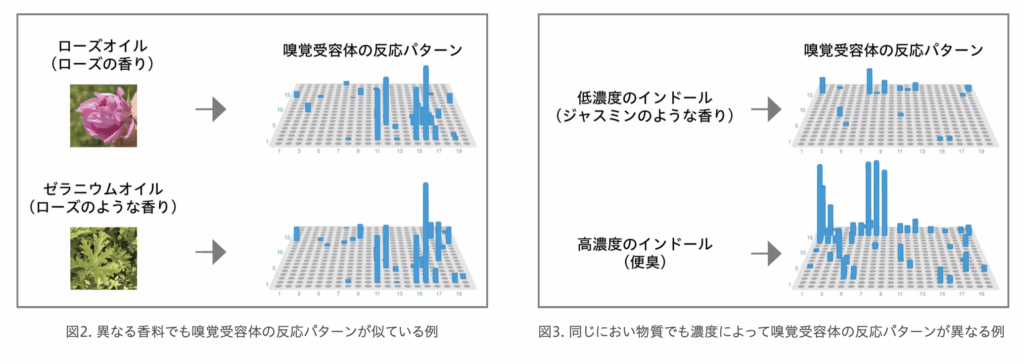https://www.kao.com/jp/newsroom/news/release/2025/20250924-001/
Kao has developed a technology that can comprehensively analyze the response of human olfactory receptors to odorants, by creating an in vitro model expressing approximately 400 types of human olfactory receptors in cultured cells and analyzing their responses to odorants.
In the human nose, olfactory receptors localize to the cell membrane and detect odorants in the air. When olfactory receptor proteins are expressed in cultured cells, their structure is unstable and they do not localize properly to the cell membrane.
The Kao researchers solved this problem by three steps:
a) they replaced specific amino acids in the human olfactory receptors which did not form a consensus sequence conserved across most animal species,
b) they used HEK293, a human kidney-derived cell line, for expression, and
c) they added a chaperone factor, leading to correct expression of olfactory receptors. However, adding this factor only properly expressed around 10% of olfactory receptors, and incorporating all olfactory receptors into an in vitro model required a method other than adding a chaperone factor.
When the olfactory receptors with the substituted amino acids were introduced into HEK293 cells, they were correctly expressed and localized to the cell membrane.
This technology was originally established by Kao in 2023 for the olfactory receptor that recognizes musk scents. This time, the same technology was applied to all approximately 400 types of olfactory receptors found in humans. While some olfactory receptors showed limited cell membrane localization even after amino acid substitutions, the researchers succeeded in localizing almost all receptors to the cell membrane of HEK293 cells. Using this technology, the company has developed the in vitro model “ScentVista 400,” in which HEK293 cells with human olfactory receptors on their cell membranes are arranged on a microplate. When the target compound is added to ScentVista 400, the cAMP concentration increases in cells expressing the olfactory receptor that responds to the target compound, causing the cells to glow due to the luciferase protein incorporated into the cells. The model is designed so that the stronger the response of the olfactory receptor, the stronger the luminescence, making it possible to detect the strength of the response.

